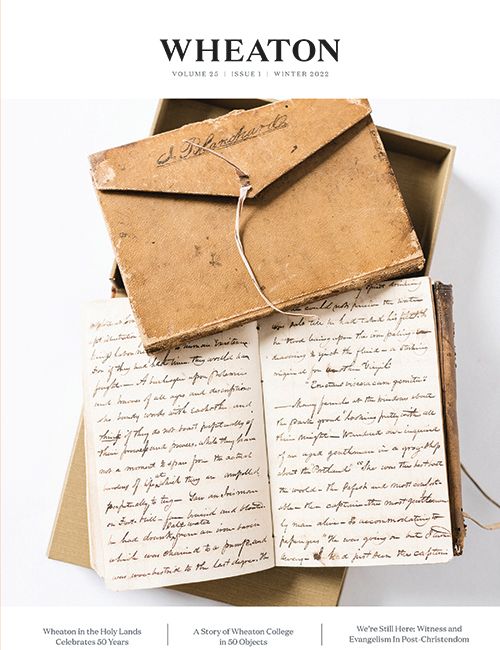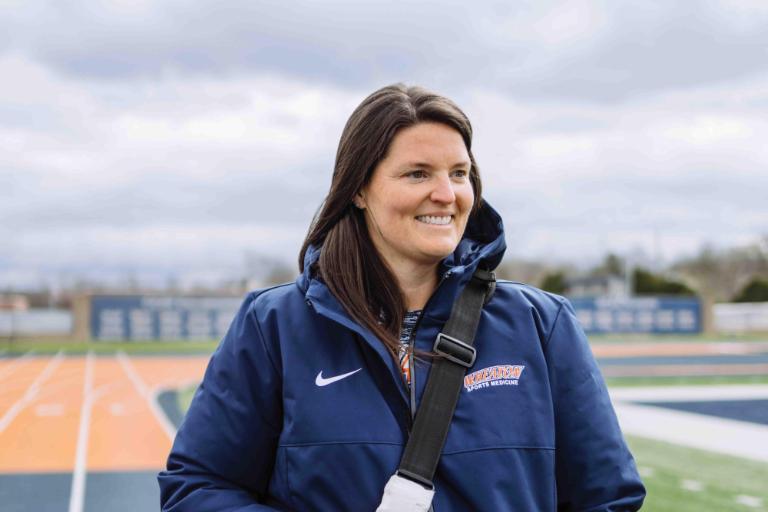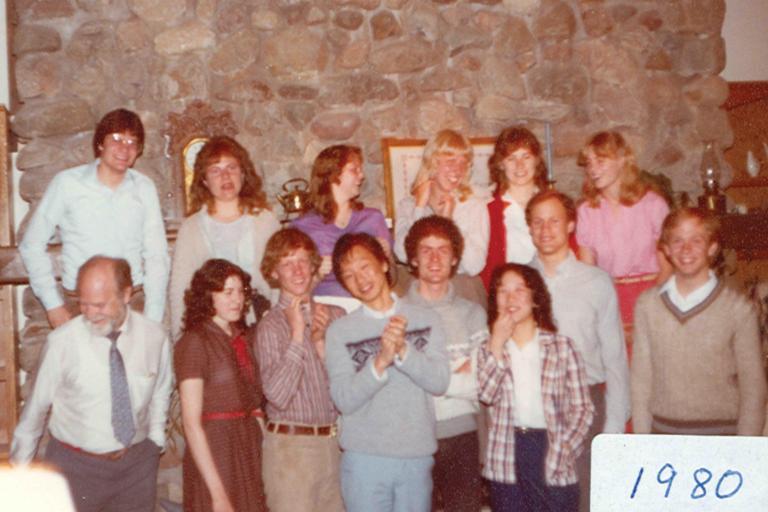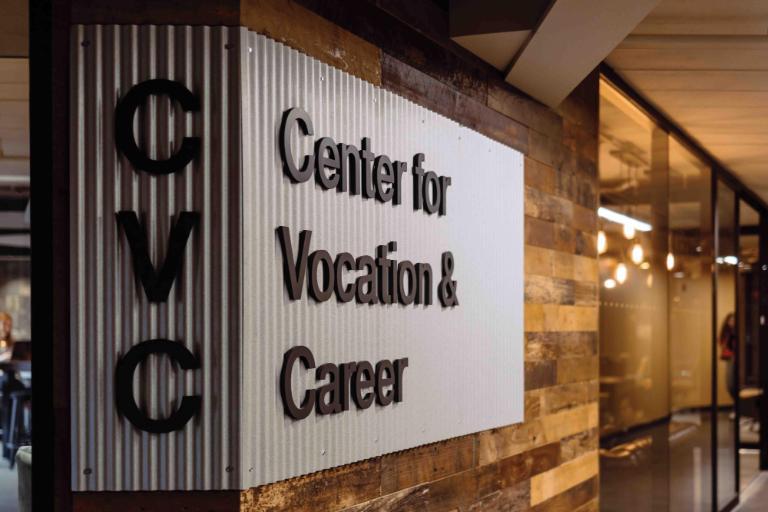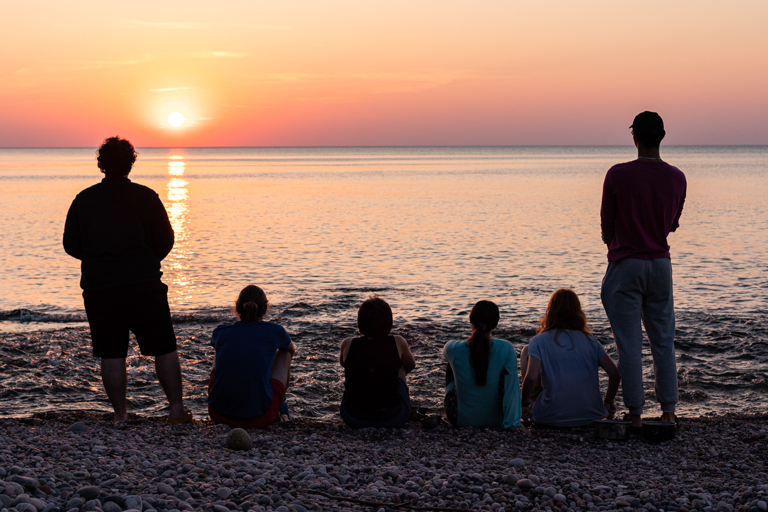Wheaton in the Holy Lands Celebrates 50 Years
Generations of Wheaties recall decades of crosscultural travel through biblical narrative
Words: Bethany Peterson ’20
Photos: Tower Yearbooks
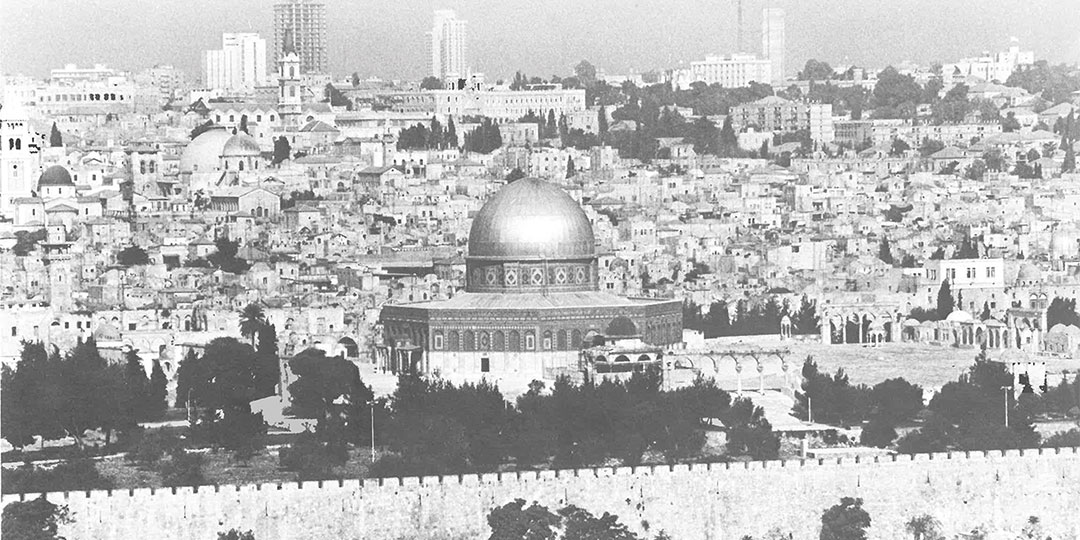
1976, a magnificent view of the iconic Dome of the Rock and the surrounding city of Jerusalem.
Among the ruins of a small, ancient amphitheater in the Samaria region of Israel, Wheaton students gathered to worship.
Standing where the stage would once have been, the students sang the opening lines to “Revelation Song”:
Worthy is the
Lamb who was slain
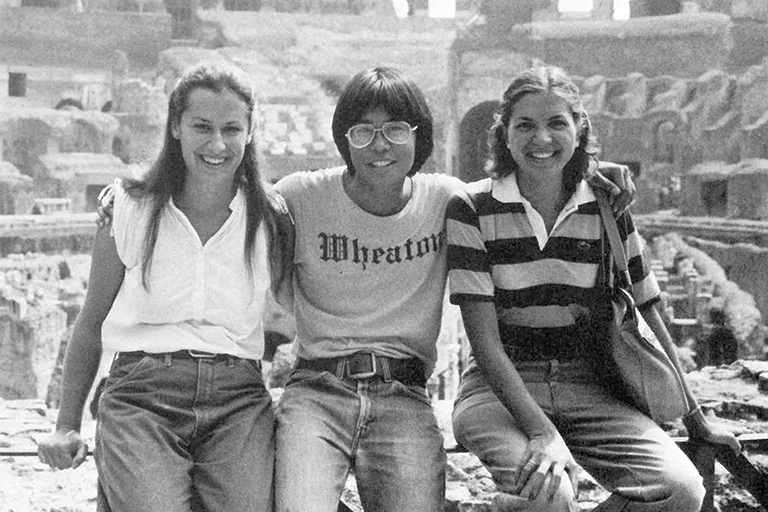
1978, posing in front of some impressive ruins
At their words, a Palestinian shepherd appeared over the ridge, leading a trail of sheep and goats across the field, as if part of the show. Moments later, as the song swelled to the chorus—Holy, holy, holy is the Lord God Almighty—the shepherd’s son followed after his father, carrying a sheep too lame to walk.
“There wasn’t a dry eye in that group,” said Dr. Chris Vlachos Ph.D. ’06, the leader and director of the 2015 Wheaton in the Holy Lands (WIHL) trip. “If we would have gotten there two minutes later or two minutes earlier—if we would’ve worshipped somewhere other than there—we never would’ve seen that. That was an unbelievable moment, but it was just one of many.”
This year marks 50 years of Wheaton in the Holy Lands (WIHL), a six-week summer program for Wheaton students sponsored by the Biblical and Theological Studies Department.
In the current model, students begin their journey with an on-campus component before flying to Israel to study in Jerusalem, then on to Greece, and finally to Rome. The purpose is to walk through the biblical narrative, connecting the Old Testament focus on the land of Israel to the journeys of Paul to the spread of the gospel and the early church in the New Testament. In total, almost 3,000 years of biblical history is covered physically, academically, and spiritually throughout the trip.
Since the beginning of the program, WIHL has partnered with two organizations for the two main sections of the trip: Jerusalem University College (JUC) in Israel and the Hellenic Scripture Union (HSU) in Greece.
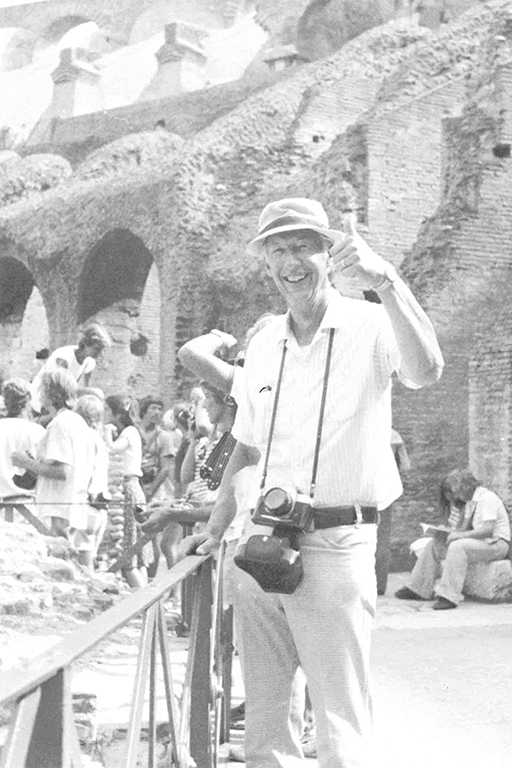
1979, President Hudson Armerding ’41 gives a thumbs up for Wheaton in the Holy Lands
There are many things that students bring back from their trip through the Holy Lands: course credit, friendships, souvenirs, and, occasionally, a future spouse. But, according to participants throughout the 50 years of the program’s history, the most important takeaways are moments like the one Vlachos described—visual memories of a Palestinian shepherd carrying a lamb, an olive branch growing out of a tree stump, the sunrise over Mount Sinai, or the view of Jerusalem from the Mount of Olives.
The current director of the WIHL program, Dr. George Kalantzis, likes to quote Dr. Paul Wright, the former president of Jerusalem University College (JUC), to describe the impact of the trip: “Many people say that they come to Israel so that the Bible may come alive for them. The Bible is always alive. It is we who come alive to the Bible.”
Fifty years later, this remains the main goal of WIHL.
THE EARLY YEARS: 1970s & ’80s
At 3 a.m. one summer morning in 1973, Joan Strutz Flitton ’75 and a group of 38 Wheaton students plus faculty members left the monastery where they’d stayed the night before.
“I could hear the jackals howling in the distance,” she said. “I remember walking in the dark and holding hands with the person ahead of us and behind us as we climbed up this mountain.”
“This mountain” was Mount Sinai, on whose summit the faculty held a sunrise service that morning.
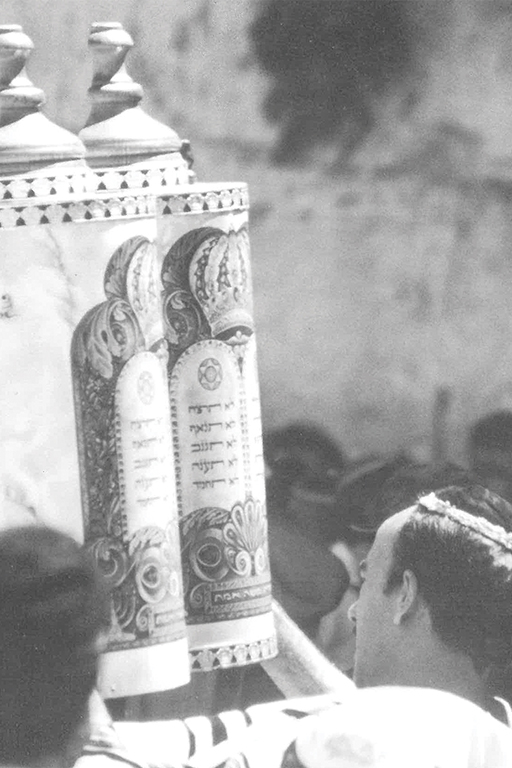
1984, a religious leader holds up scrolls
Flitton was on one of the first WIHL trips. The program was founded only two years before, in 1971, by former Professor of New Testament and Christian Ethics Dr. Alan Johnson.
In the first few decades of WIHL, students spent roughly three weeks on campus before traveling to Greece, Israel, Egypt, Turkey, and Rome for about two months. At the time, Wheaton operated on a quarter system and strongly encouraged students to stay on campus or travel with an international program during the 12 weeks of summer vacation.
Flitton didn’t seem to mind the length of the trip.
“Jerusalem, the Old City, we knew forward and backward,” she said.
Jerusalem University College (JUC), previously known as the Institute of Holy Land Studies, has been a partner since WIHL’s founding. Students not only live on JUC’s campus (which is located on the wall of the Old City in Jerusalem), but also take classes from local professors.
Dr. C. Hassell Bullock HON, Professor of Old Testament and Hebrew Grammar for 36 years, led the program many times during the 1980s and ’90s, and served as the director for nine nonconsecutive years. During this time, he standardized the program to eight weeks and cut the program to only one bus of 50 students—before 1982, there were two trip options every summer.
As an academic program, the opportunity to lead the trip with another faculty member, direct the program, and serve on the committee for WIHL rotates through faculty in the Biblical and Theological Studies Department.
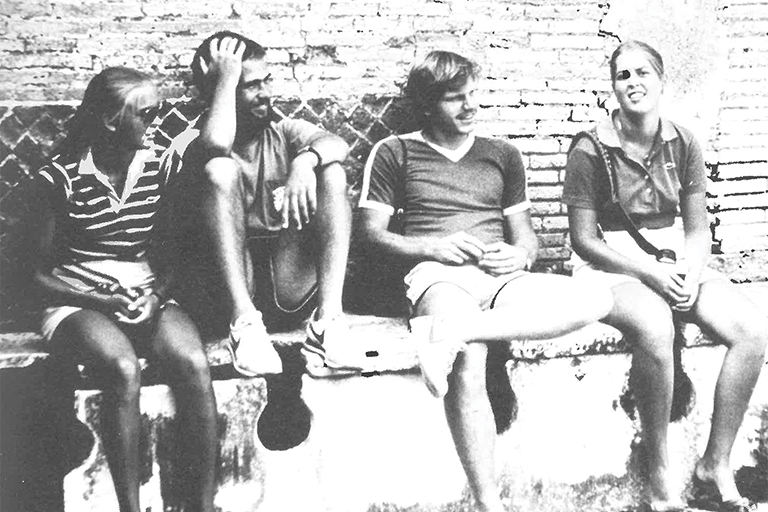
1981, students rest on ancient public toilets
“It was a great blessing to faculty, too … Going to the Holy Lands is an expensive trip. And faculty could go and come back with that experience and have so many ways to look that they didn’t have beforehand, and it really meant a lot to them as well as to the students,” Bullock said.
The relationships built between students and professors is a core value of the program. One year, in 1980, students found out that it was Bullock and his wife, Rhonda’s, 15th wedding anniversary. Rhonda came along, since family members are allowed to travel with faculty. They gathered donations and sent the Bullocks to a dude ranch for dinner by themselves to celebrate. But Bullock also recalls many mishaps, like when students got lost in Greece on a walk or stayed out all night exploring Jerusalem without telling anyone.
“Oh, there were moments like that,” he laughed. “That’s the nature of college students. I really enjoy college students. I just love their enthusiasm and their fresh perspective on things.”

1985, students try out a camel ride
Joyce Etsuko Kitano ’85, M.A. ’87, who traveled with Bullock in 1983, said, “Our group became very close with each other and with the professors who led our group. We continued to have reunions for several years afterward, and I’m still very close to the Bullock family and some of the students who went on the trip even 38 years later.”
The students also build strong relationships with the partner organizations. In addition to JUC in Israel, WIHL partners with the Hellenic Scripture Union (HSU) in Greece.
“They were so kind and hospitable,” Gloria Ginn ’85, M.A. ’87, who also traveled in 1983, said of HSU. “They would always save up their water rations for a long time and then when we came, because there were 50 of us, they let us use their water rations for showering.”
She remembers the relationships between WIHL and HSU being so strong that all 50 students were invited to a family wedding in Thessalonica.
A FULL ITINERARY: THE 1990s TO 2001
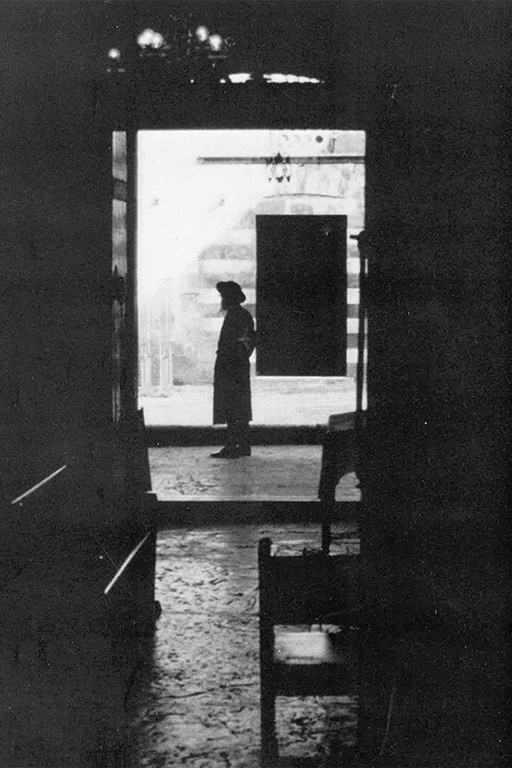
1985, a local framed in a doorway
When John ’96 and Karen Whitecotton Bonnell ’97 arrived in Israel in 1996, the city of Jerusalem was preparing for an extravagant 3,000-year anniversary. For weeks, while studying at JUC and exploring the city in their free time, they watched while violinists were practicing and shop owners were setting out decorations.
Then, on one dramatic evening, their group sat on a rooftop and listened to the sound of the Israeli symphony orchestra reverberate around the Hinnom Valley while an hour-long fireworks display exploded above the Old City of Jerusalem beneath them, sparks from the crackling remains starting small fi res in a nearby cemetery.
In a way, the WIHL trip is different every year. Geopolitical conflicts, trip leadership, and global events color everything from the exact course content to the trip itinerary.
Although it wasn’t possible every year, participating students in the ’90s were able to go to Turkey, Jordan, Egypt, and even Syria during the duration of the program, more sites than any other era.
These sites not only illuminate the biblical narratives, but also introduce students to the modern Middle East. “We really valued being exposed to all the different people that were involved on the trip that leadership intentionally helped us interact with,” John said. “The historical survey … really helped me understand the ancient origins of the conflict and why genuine peace was and still is so difficult.”
WIHL also historically offered an optional dig at the end of the program to help students become acquainted with archeological concepts.
Peter Weston ’03, who traveled in 2001 on the last dig, was an archaeology major. “That was an incredible opportunity— an incredible experience just being able to dig down through dirt, sift different things, and potentially be the first human to touch an artifact that was deposited during the time of David or Solomon,” he said.
Kjirsten Flitton Boeve ’02, Joan Flitton’s daughter, who also traveled in 2001, fondly remembers how the professors prompted them to interact with the sites. At the grave of Agamemnon in Greece, they reenacted a fake burial. Boeve was chosen to play the dead person in the skit.
“I mostly remember people trying to do crazy pictures— just having fun. Everybody was having such a good time but learning,” she said.
A TURNING POINT: THE 2000s TO 2010s
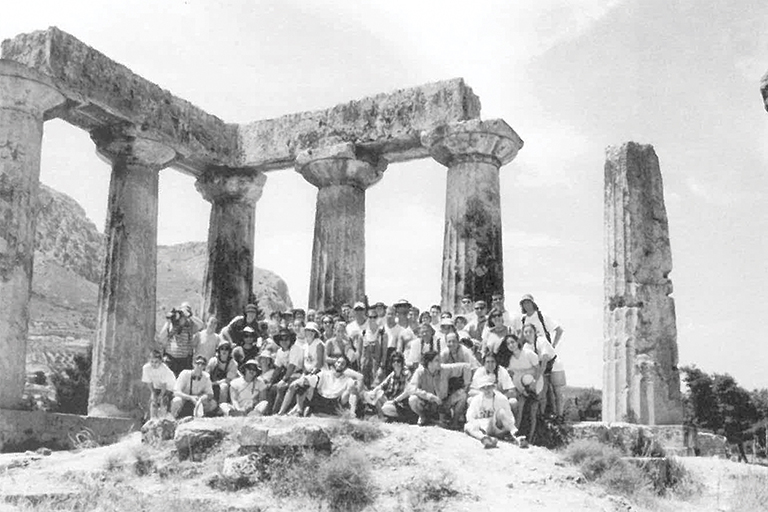
1985, the cohort poses together for a group photo
After the summer trip in 2001, Professor of Archaeology Dr. Daniel Master was preparing for a similar itinerary, but after the terrorist attacks on September 11, everything had to change.
“The attack on the World Trade Center really changed how people thought about terrorism and how people thought about international travel. One of the issues that we faced right away was that insurance companies decided that they wouldn’t insure travel to places with a State Department travel warning,” Master explained.
Because Israel was one such place, the trips had to be canceled in 2002 and 2003.
However, these difficulties were also an opportunity to rethink the program’s structure. Previously, the students went to Greece first, even though it didn’t fit the biblical chronology, due to HSU’s schedule and limitations on traveling to certain countries after getting an Israeli passport stamp. When WIHL students were able to travel freely again, the chronology was restructured in the logical order with Israel first.
This reframing continued into the directorship of Kalantzis, who took charge in 2007. But Kalantzis’ involvement with WIHL actually goes back 50 years. He was born and raised in the small evangelical community that hosts WIHL students in Greece. As a teenager, he helped welcome and host the WIHL program at HSU.
When asked about his first time attending the program as a Wheaton faculty member rather than a local host, Kalantzis said, “It was peculiar.”
“We stayed in the same place, the same camp, at the Hellenic Scripture Union, where we had welcomed the Wheaton students from the first days of the program. We ate at the same tables, sat on the same chairs, looked at the same paintings on the walls, and more importantly, the same people were welcoming the group. Older now, but the same people. These were the people with whom I grew up. It was both a homecoming and a very weird experience being on the other side of the counter,” he continued.
However, Kalantzis said it was also “immensely rewarding” because of one of the characteristics of WIHL and other such programs: It is not only what the students or faculty get from the program—it’s also what the welcoming and hosting communities receive in return. In Greece, less than 1 percent of the population identifies as evangelical, so the arrival of 50 young evangelicals is a reminder that “you’re not alone.”
Kalantzis wants the trip to be more than just a fun traveling experience. He wants students to see themselves as part of the global church. One addition under his leadership was lengthening the on-campus program into a semester-long class to spread out the workload and dive deeper into the content.
“We think about the land, its history, its geography, its religions. We prepare ourselves so that when we enter the place—in this case, the first stop is Israel—we understand what we are seeing,” Kalantzis said.
When Kalantzis went on sabbatical in 2015, Vlachos took over as director. The restructuring continued when Wheaton switched to the Christ at the Core curriculum in 2016. With the new Christ at the Core requirements, the program was not able to offer Old Testament Literature, but still includes New Testament Literature, Christian Thought, and three optional 300-level Bible electives.
For Vlachos, the program is essential to give students “a global perspective, an appreciation and application of other Christian traditions outside of the Western world.”
“It draws the students into a historical narrative where they no longer look at things that happened, they come back with the realization that they are part of the story that has happened and is happening,” he said. In fall 2021, Vlachos led the first group of Wheaton students on a semester-long study abroad program at JUC.
Matthew Rueger ’19, who traveled with Vlachos in 2017, agreed. One of his favorite memories of the trip was when a priest that Vlachos knew allowed the students into a private Armenian chapel underneath the Church of the Holy Sepulchre to have a Bible study. They decided to read through the passion narrative in Matthew and sing a few worship songs.
“That was super spiritually powerful. It was this awesome moment where we’re under the Rock of Calvary and we’re reading about the crucifixion … it just felt very redemptive,” Rueger said. They later realized that the entire church could hear them singing.
THE MISSED YEARS: 2020 & BEYOND
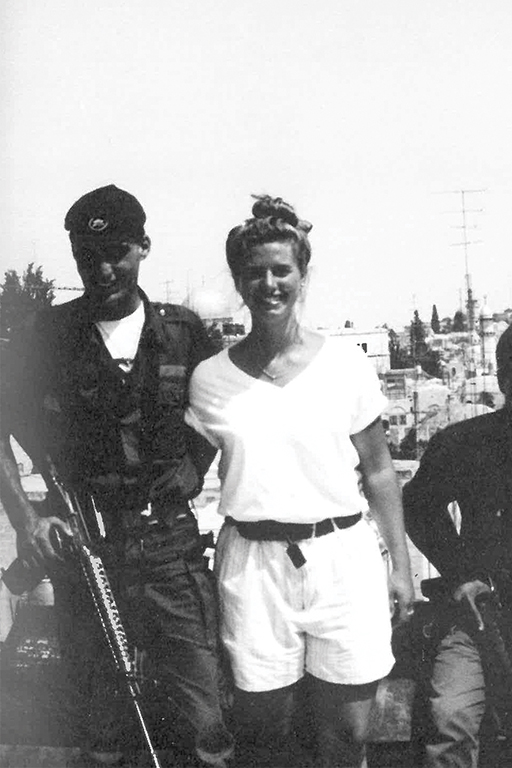
1985, a student poses with a local soldier
For the last two years, WIHL has been canceled due to COVID-19 restrictions. Perhaps, like in 2002, this could be an opportunity for the program to adapt again to changing times and student needs.
One obstacle is a steadily increasing cost. Kalantzis, who became director again in 2019, hopes to build an endowment to help provide financial aid and scholarships in the future to make the program accessible to all students. He also hopes that parents and students continue to see the value of a program that is primarily academic, rather than professional.
He explained, “We want [students] to have engaged people different from themselves ethnically, culturally, linguistically, and religiously—and denominationally, of course—and to have gained a better understanding of the long tradition of the church and of the people of God. So, by the end of the program we will have traveled across 3,000 years of history with them. We want our students to understand better who they are in the long narrative of God.”
As Master put it, “[WIHL] faces challenges going forward. But in the end we can say that for the last 50 years several generations of Wheaton students have had a chance to explore the world of the Bible and to be able to see the Bible in its context in a special way. That has been a great service to those who have graduated, who can look back at their Wheaton experience and say, ‘This was really helpful to me for the rest of my life.’”
